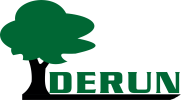Views: 3 Author: Site Editor Publish Time: 2023-12-29 Origin: Site











In the selection of columnar activated carbon, commonly used reference indicators are: iodine value, carbon tetrachloride (CTC), methylene blue value, density, ash, moisture。What is the columnar activated carbon distinction method?
1. The iodine value is used to represent the adsorption capacity of columnar activated carbon on liquid substances, and the iodine value ranges from 500-1000mg/g;
2. The adsorption value of carbon tetrachloride is usually replaced by CTC, which is used to represent the adsorption capacity of columnar activated carbon on gaseous substances. The CTC value ranges from 40-90;
3. The adsorption value of methylene blue is referred to as subblue, which is used to represent the decolorization ability of columnar activated carbon. The value of methylene blue varies from 100-150mg/g;
4. The density is also called filling density. The smaller the density value, the lighter the weight of columnar activated carbon and the more developed the void structure.
5. Ash represents the dust content in columnar activated carbon, with ash content ranging from 6-10%;
6. Moisture represents the humidity of columnar activated carbon, moisture from 3-10%.
The higher the first three indicators, the stronger the adsorption capacity of columnar activated carbon, the lower the content of the last three, the better the quality of columnar activated carbon. So we can buy columnar activated carbon according to their own use, combined with the indicators provided by the manufacturer to buy their own use of columnar activated carbon.
Scope of application
1. Gas phase adsorption.
2, Organic solvent recovery (benzene recovery in benzene gas toluene, xylene, acetate fiber industry).
3, Remove impurities and harmful gases, waste gas recovery.
4. Recycle excess gasoline from oil refineries, gas stations and oil depots.
5, Special water treatment, catalyst carrier, etc.
What Are The Differences Between Impregnated Activated Carbon And Ordinary Activated Carbon?
Application of coal-based activated carbon in environmental protection field
The Principle And Effect of Activated Carbon Adsorption of Formaldehyde
Application of coal-based activated carbon in flue gas desulfurization and denitrification
